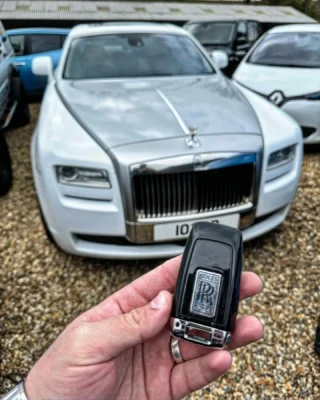Comprehensive Guide to Car Door Lock Repair: Troubleshooting and Solutions
The stability and functionality of a vehicle's door locks are vital for both the security of the car and the safety of its residents. vehicle key programming can experience a variety of problems, ranging from minor mechanical problems to finish failures. This article looks for to supply a helpful summary of car door lock repair, detailing typical issues, diagnostic procedures, and solutions.
Understanding Car Door Locks
Before delving into repair procedures, it is crucial to comprehend the parts of a normal car door lock. There are 2 main kinds of locks: mechanical and electronic.
Components of a Car Door Lock System
- Lock Cylinder: The part where the key is placed.
- Latches: Mechanisms that hold the door shut.
- Actuator: Electric motor in electronic locks that assists in locking and unlocking.
- Linkage: Connects the lock cylinder to the latch.
- Remote Key Fob: In electronic systems, this is utilized to lock and unlock the doors from a range.
Common Issues with Car Door Locks
Car door locks can fail for a wide variety of reasons. Here are some typical issues experienced by vehicle owners:
- Sticking or Frozen Locks: Especially in winter, locks can end up being challenging to operate.
- Lock Not Engaging or Disengaging: Both mechanical and electronic locks can deal with concerns where they do not respond to the key or remote.
- Key Jams: The key may get stuck in the lock, making it impossible to lock or unlock the door.
- Remote Malfunction: In electronic systems, the key fob may not work due to battery concerns or programming issues.
- Physical Damage: Vandalism or accidents can harm the lock system.
Fixing Car Door Lock Issues
When a car door lock is not working correctly, it is important to detect the problem accurately before continuing with a repair. Below are steps that can assist fix the problem:
Step-by-Step Troubleshooting
Visual Inspection:
- Check the door lock and surrounding elements for noticeable damage.
- Analyze the key for wear and tear.
Test the Key:
- If the lock is sticking or not engaging, attempt using a spare key if readily available.
- Guarantee the key is tidy from dirt and particles.
Inspect the Actuator:
- Listen for any noises when pressing the key fob. A clicking noise may suggest a malfunctioning actuator.
Inspect Door Wiring:
- Check the electrical wiring that connects the door lock to the vehicle's electrical system.
- Look for disconnected or torn wires.
Temperature level Influence:
- If the lock is sticking in winter, apply lithium grease to assist oil the system.
Fixing Common Door Lock Issues
When the issue has actually been identified, the repair can begin. Here are some typical repair methods for various problems:
Fixing a Sticking or Frozen Lock
- Cleaning: Use a graphite lubricant or silicone spray to clean and lubricate the system.
- Heating: If frozen, use a hairdryer to warm the location around the locking system carefully, preventing overheating.
Fixing a Lock Not Engaging/Disengaging
Lock Cylinder Replacement:
- If the lock cylinder is worn, consider changing it. This frequently includes prying off the door panel to access the lock system.
Actuator Replacement:
- For electronic locks, if the actuator is malfunctioning, it will require replacement. Make sure to detach the battery before trying this repair.
Repairing a Jammed Key
- Extraction Tool: If a key is stuck, utilize a pair of needle-nose pliers to carefully pull it out, or a key extractor.
- Lock Lubrication: Apply a percentage of lubricant to ease the procedure.
Remote Key Fob Malfunction
- Battery Replacement: Most remotes have replaceable batteries. Follow the maker's guidelines to change the battery.
- Reprogramming: Sometimes, the remote needs to be reprogrammed. Describe the vehicle's handbook for steps to reprogram the key fob.
Physical Damage Repairs
- Door Lock Assembly Replacement: If the lock is physically damaged, complete replacement of the lock assembly might be essential.
- Expert Help: If uncertain about DIY repairs, look for help from a qualified mechanic.
Upkeep Tips for Car Door Locks
To lengthen the life of car door locks, regular maintenance is necessary. The following practices can assist maintain optimal performance:
- Regular Lubrication: Apply proper lube to the locks every few months.
- Keep Keys Clean: Regularly tidy the car keys to prevent dirt buildup.
- Avoid Excessive Force: Do not use extreme force when locking or opening; this can trigger damage with time.
- See for Signs of Wear: Be attentive to any modifications in the lock's performance and address issues quickly.
FAQs about Car Door Lock Repair
Q: How can I inform if my door lock is broken?A: Common
signs consist of the lock not engaging or disengaging, a jammed key, sounds from the door when utilizing the key fob, or visible damage to the lock assembly.
Q: Can I repair a car door lock myself?A: Yes, numerous simple concerns can be dealt with by following the repairing steps in this article, however complicated issues might require professional assistance. Q: What type of lube need to I use
for my locks?A: It is best to use graphite powder or silicone-based lubricants since oil can bring in dirt and grime. automotive locksmith : How much does it generally cost to change a car door lock?A: The cost can differ extensively
based on the vehicle's make and model, however normal replacement expenses
can range from ₤ 100 to ₤ 300, including labor. Car door lock repair can seem challenging, but comprehending the elements and common issues can make the procedure a lot more manageable. Whether dealing with small repairs yourself or seeking expert support for more significant problems, keeping the door locks operating appropriately is necessary for vehicle security and safety. Regular upkeep and prompt attention to issues can significantly extend the life of your car's locking system.

